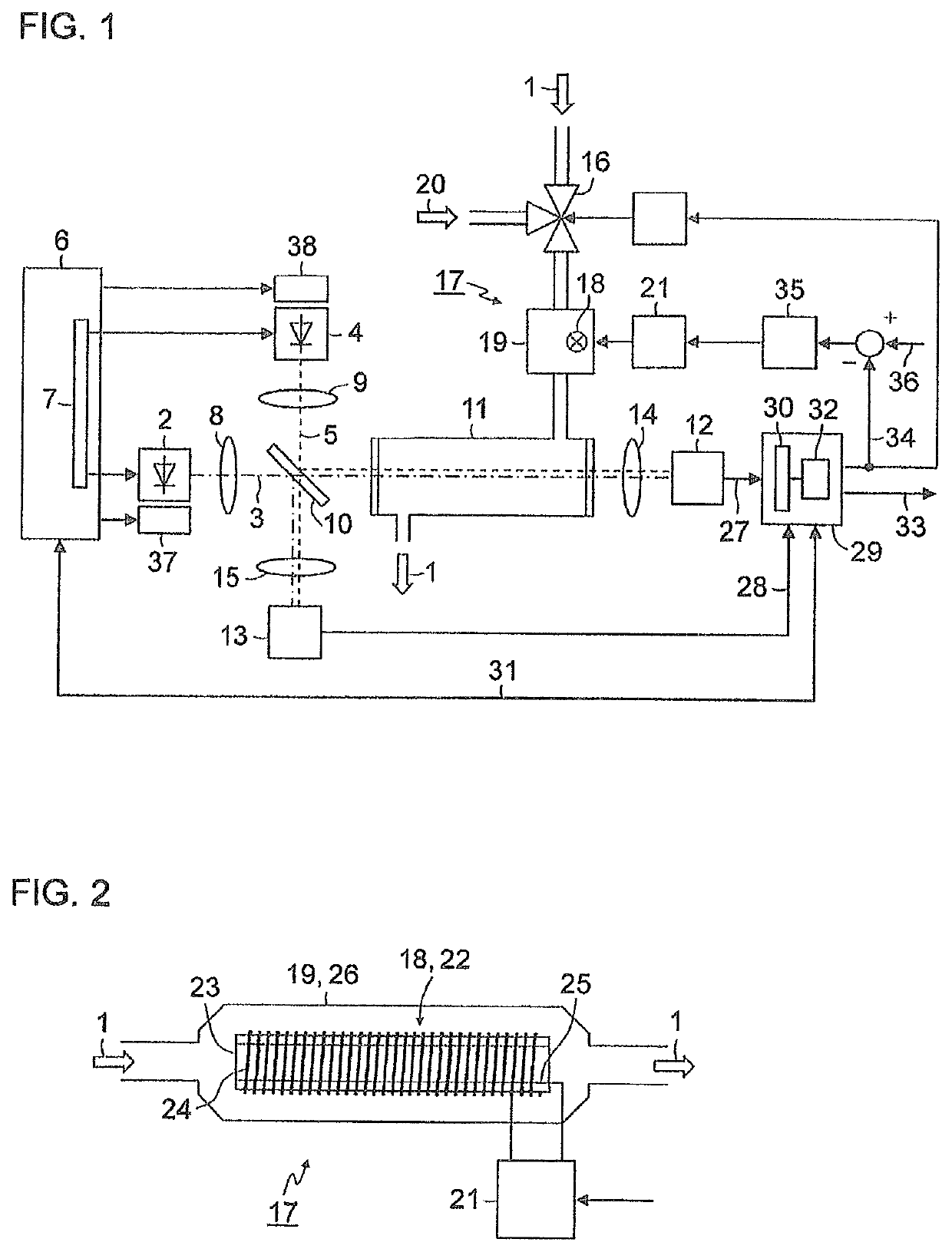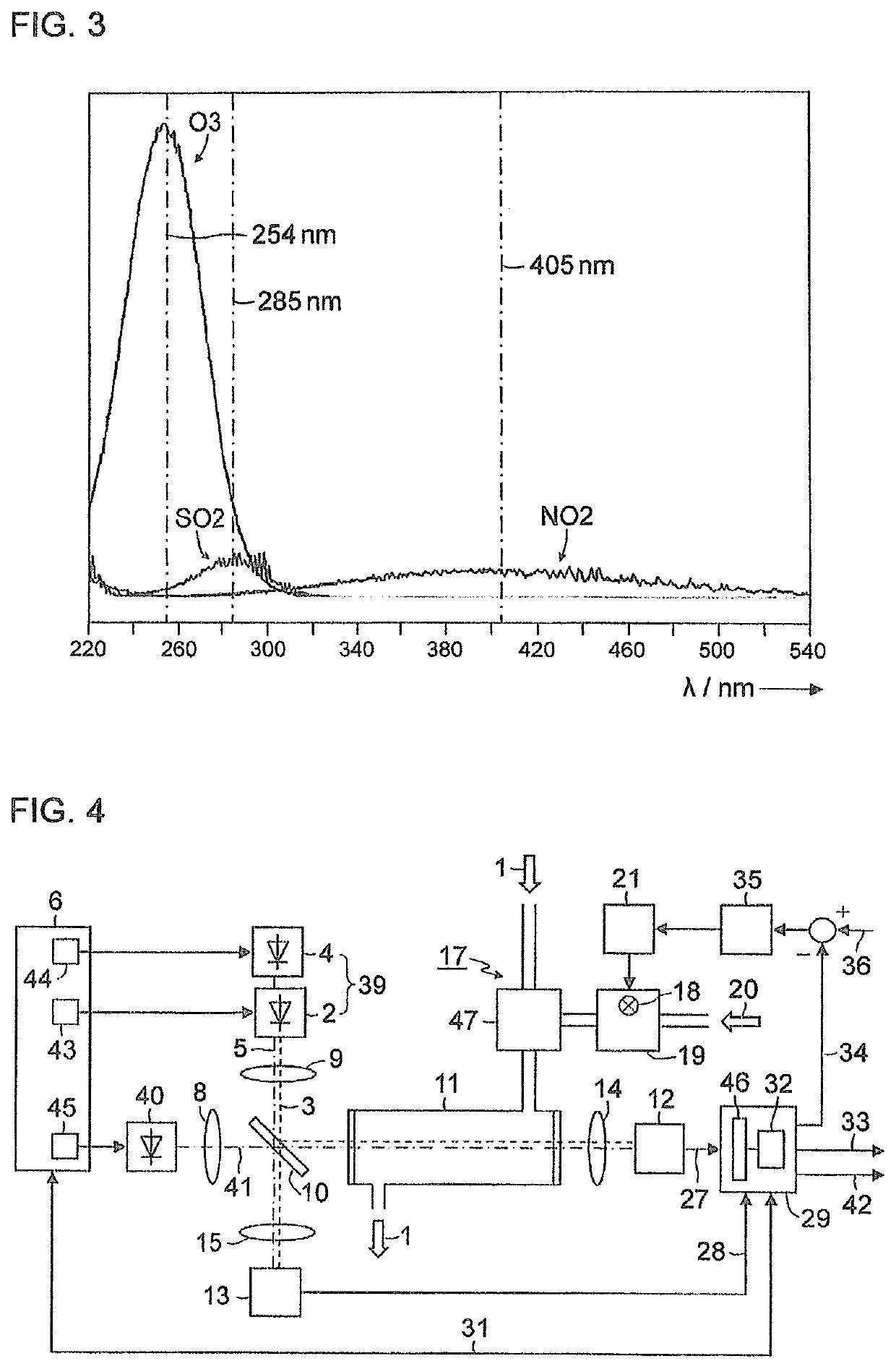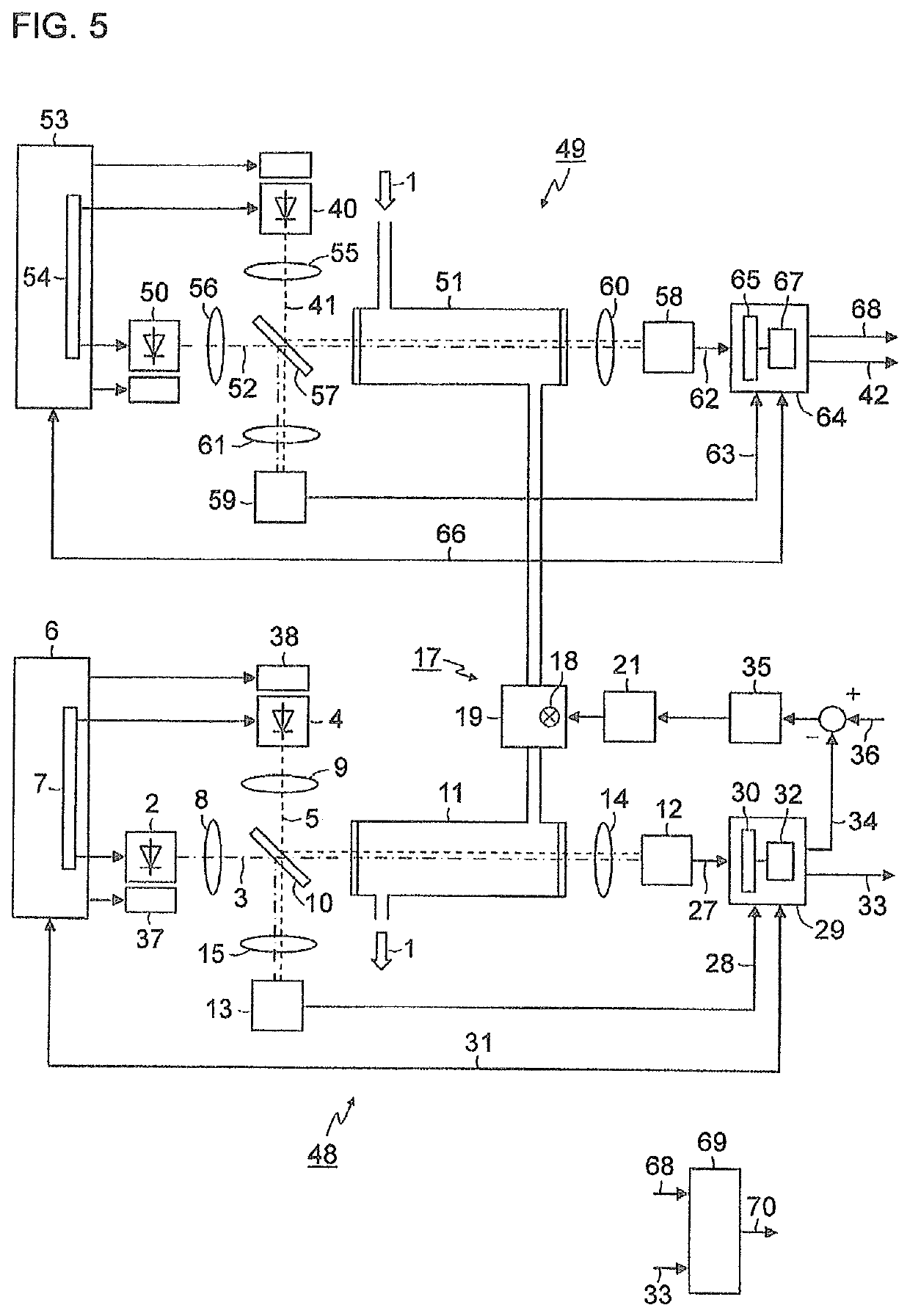Optical gas analyzer and method for measuring nitrogen oxides in an exhaust gas
a gas analyzer and optical technology, applied in the direction of machines/engines, separation processes, instruments, etc., can solve the problems of incomplete thermal decomposition of excess ozone and low concentration, and achieve reliable, continuous measurement of nitrogen oxides, and low equipment investment
- Summary
- Abstract
- Description
- Claims
- Application Information
AI Technical Summary
Benefits of technology
Problems solved by technology
Method used
Image
Examples
Embodiment Construction
[0036]Identical parts and parts with identical functions are given the same reference numbers in each case.
[0037]FIG. 1 is a simplified schematic representation of a block diagram of a gas analyzer for measuring nitrogen oxides in an exhaust gas 1. A first light-emitting diode 2 generates light 3 in the wavelength range of between 350 nm and 500 nm, for example, with a central wavelength of 405 nm. A second light-emitting diode 4 generates light 5 in the wavelength range of between 250 nm and 265 nm, for example, with a central wavelength of 254 nm. Both light-emitting diodes 2, 4 are actuated by a control device 6 which, in the exemplary embodiment depicted here, contains a multiplexer 7 in order to switch the light-emitting diodes 2, 4 on and off alternately. The light 3, 5 emitted by the light-emitting diodes 2, 4 is shaped via collimator lenses 8, 9 into parallel light bundles (hereinafter, called light beams) and supplied to a beam splitter 10, preferably a “polka-dot” beam spl...
PUM
| Property | Measurement | Unit |
|---|---|---|
| central wavelength | aaaaa | aaaaa |
| central wavelength | aaaaa | aaaaa |
| central wavelength | aaaaa | aaaaa |
Abstract
Description
Claims
Application Information
 Login to View More
Login to View More - R&D
- Intellectual Property
- Life Sciences
- Materials
- Tech Scout
- Unparalleled Data Quality
- Higher Quality Content
- 60% Fewer Hallucinations
Browse by: Latest US Patents, China's latest patents, Technical Efficacy Thesaurus, Application Domain, Technology Topic, Popular Technical Reports.
© 2025 PatSnap. All rights reserved.Legal|Privacy policy|Modern Slavery Act Transparency Statement|Sitemap|About US| Contact US: help@patsnap.com



